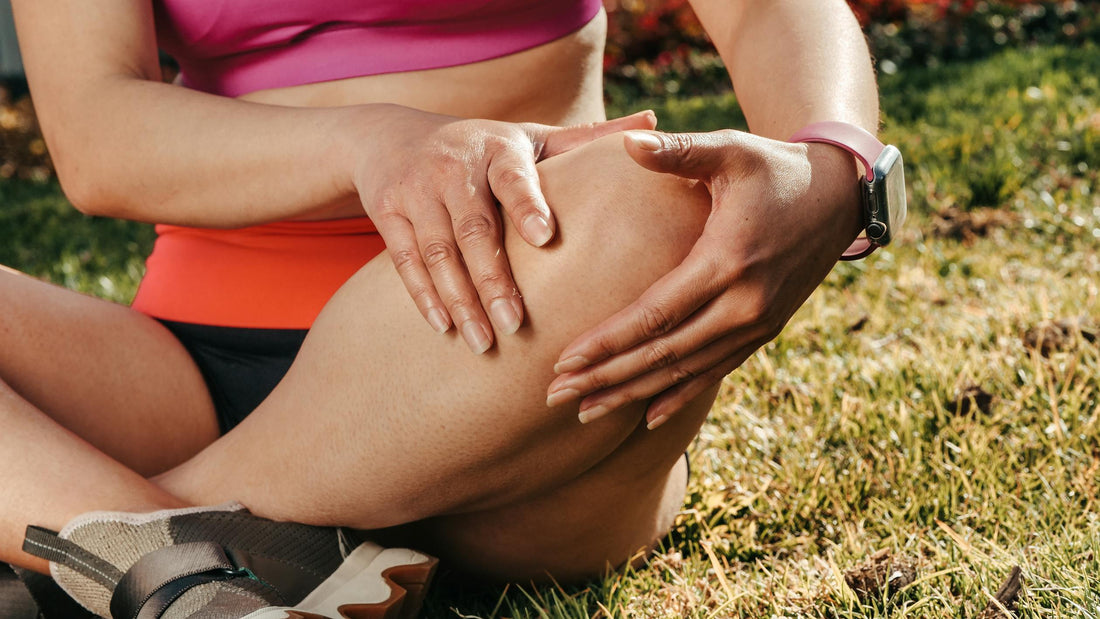Patellar tendinopathy or "jumper's knee" typically occurs due to repetitive stress or overuse of the patellar tendon, which connects the kneecap (patella) to the shinbone (tibia).
Generally, it affects athletes involved in sports that require jumping, running, or sudden
changes in direction, such as basketball, volleyball, and soccer.
Symptoms of Patellar tendinopathy
Symptoms typically include pain and tenderness around the patellar tendon. This occurs especially during physical activities or when climbing stairs.
If you're experiencing these symptoms, it is advisable to rest and consult a healthcare professional for proper diagnosis and treatment.
Most common causes of Patellar tendinopathy
- Overuse: High-impact activities done too frequently without adequate recovery.
- Muscle imbalances: Weakness or tightness in the quadriceps, hamstrings, or calf muscles.
- Training errors: Sudden increases in intensity, frequency or volume of activity.
- Improper technique: Poor jumping or landing mechanics.
Treatment and prevention of Patellar tendinopathy
-
Rest and reduce activity:
Reduce or modify activities that cause any pain. Cross-train by swimming, cycling or using the elliptical to maintain fitness without stressing the tendon.
-
Ice Therapy:
Apply ice packs to the affected area for 15-20 minutes several times a day to reduce inflammation.
- Orthotics and Support:
Insoles or knee braces to provide support and alleviate strain on the tendon. We recommend using Enertor insoles which are shock-absorbing, reducing the impact on your knees by 51%.
- Physical Therapy:
A physical therapist can design a personalized rehabilitation program, focusing on stretching, strengthening and improving biomechanics.
- Strengthening Exercises:
Emphasize exercises for the quadriceps, hamstrings, and hip muscles to improve overall leg strength and support the knee.
- Stretching:
Incorporate stretches for the quadriceps, hamstrings, and calves to enhance flexibility and reduce tension on the tendon.
- Medications:
Nonsteroidal anti-inflammatory drugs (NSAIDs) can help reduce pain and inflammation.
- Gradual Return to Activity:
Once symptoms improve, reintroduce activities slowly, focusing on proper technique and gradual increases in intensity.
- Injections:
In some cases, corticosteroid or platelet-rich plasma (PRP) injections may be recommended by a medical practitioner.
Prevention of Patellar Tendinopathy
- Proper Warm-Up:
Always warm up before physical activity to prepare the muscles and tendons.
- Strength Training:
Engage in a balanced strength training program for the legs, focusing on the quadriceps, hamstrings, and hip muscles.
- Flexibility:
Regularly incorporate stretching routines for leg muscles to maintain flexibility.
- Technique Improvement:
Work with a coach or trainer to ensure proper jumping, landing, and running mechanics.
- Gradual Progression:
Increase training intensity, volume, or frequency gradually to avoid overloading the tendon.
- Cross-Training:
Mix in low-impact activities (e.g., swimming or cycling) to reduce repetitive strain on the knees.
- Footwear:
Wear appropriate shoes that provide good support and cushioning for your specific sport or activity. We recommend adding Enertor insoles to your shoes to significantly boost their cushioning.
- Listen to Your Body:
Pay attention to any signs of pain or discomfort and adjust training accordingly.
By combining these treatment and prevention strategies, you can effectively manage and reduce the risk of patellar tendinopathy. We recommend using Enertor insoles to support your recovery. Find out more about them here. If symptoms persist, consult a healthcare professional for further evaluation and personalized care.

